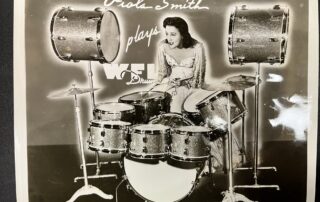If art is in the eye of the beholder, Manabu Ikeda’s mind boggling art is a reflection of his imagination. “As a child I really liked penciling, just drawing lots of really detailed drawings. The first thing I sold was actually the first work of art I did at the age of 24 and I did it with pen,” Ikeda said. Today it is on display at the Obuse Museum & the Nakajima Chinami Gallery and the rest of Ikeda’s Asian influenced landscapes are displayed around the world
He says his art represents the struggle between man and nature, as seen in Ikeda’s painting titled: Meltdown. It hangs in the Chazen Museum of Art in Madison. Two floors below that painting, in a basement studio, Ikeda has been working on a new art project for the past three years.
With painstaking detail he crafts an image in his mind and then puts it to paper in minute detail. The art itself is anything but miniature. It will be Ikeda’s largest pen and ink illustration ever. The massive undertaking measures at 10 feet high and 13 feet wide.
The theme of this gigantic work is the 2011 triple disaster of the tsunami in Japan, the Fukushima nuclear disaster and the destroyed environment. Over the many days, months and millions of tiny strokes that followed a magnificent splash of color and crisis emerged from the tip of Ikeda’s pens.
Ikeda’s meticulous artwork stretches the imagination, like a “Where’s Waldo” on steroids. There are many hidden images, like a picture within a picture. At the bottom of the canvass you can see a town that’s been destroyed where people have lost their lives. In the middle, there are people using a tree to remake their homes and planting vegetables in the airplane windows amidst the disaster. In Ikeda’s world, anything can happen.
Even with the magnitude of detail and millions of tiny brush strokes Ikeda doesn’t think his work is that difficult. Not difficult perhaps until he dislocated his shoulder in a downhill skiing accident. Ikeda was on deadline and said, “I was really concerned whether I could finish this work or not”. Despite his injury Ikeda forged ahead, using his other hand. Ikeda said, “There was really no point getting depressed about this, so I just decided to finish the work and finish it with my left hand”. He taught himself to paint with his left hand in the middle of this project.
Millions of dollars were on the line. He said the most difficult part was trying to control his hand, because it was shaking and not keeping steady. Ikeda added, “I had never actually drawn anything with my left hand before, so this was a big challenge for me”. It’s a challenge where he completes just four square inches while working 10 hour days. The injury has slowed Ikeda’s progress but not his determination.
His untitled masterpiece could fetch millions of dollars on the art market. Ikeda does not view himself or his art as anything special though. “I don’t really think I’m that famous. I don’t think anyone thinks I’m famous and I certainly don’t feel famous,” Ikeda said.
Ikeda can say he’s not famous, yet art galleries and collectors worldwide want his work. He has reached the pinnacle of Japanese contemporary art. “A lot of artists don’t like to talk about their own work but I think I’m a little different in that regard. When I use my work as a way to communicate with people, that’s really the source of my passion for my work,” Ikeda said.
Ikeda’s masterpiece will be on display at the Chazen Art Museum from Nov. 18 until Dec. 11.
Madison vs. Japan
Manabu Ikeda compares his time in Madison to his home in Tokyo
White Figures
Manabu Ikeda explains why he leaves humans and wildlife colorless when he paints them.










